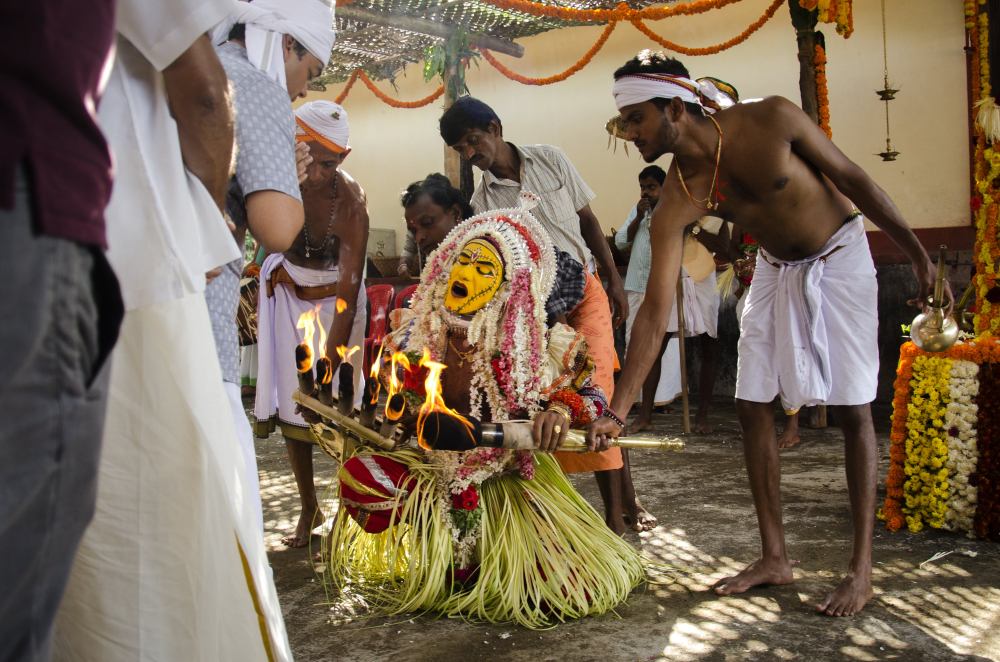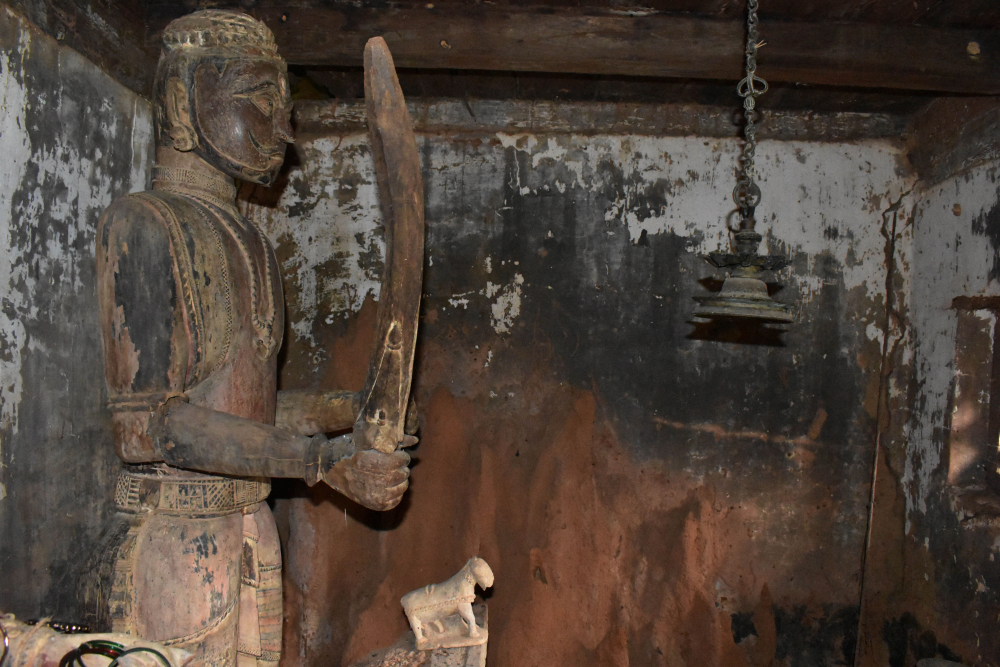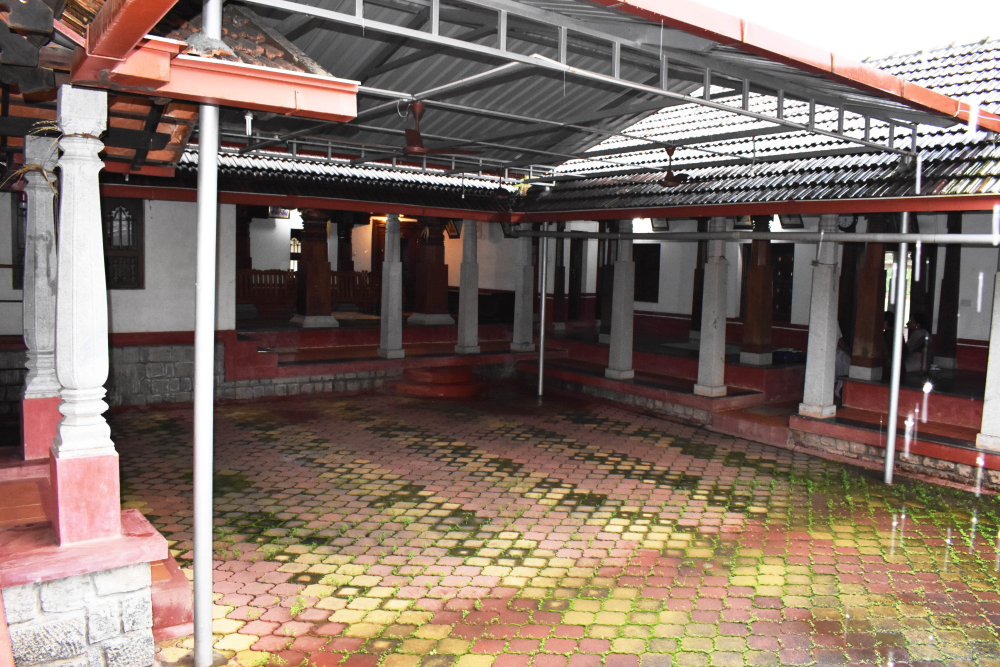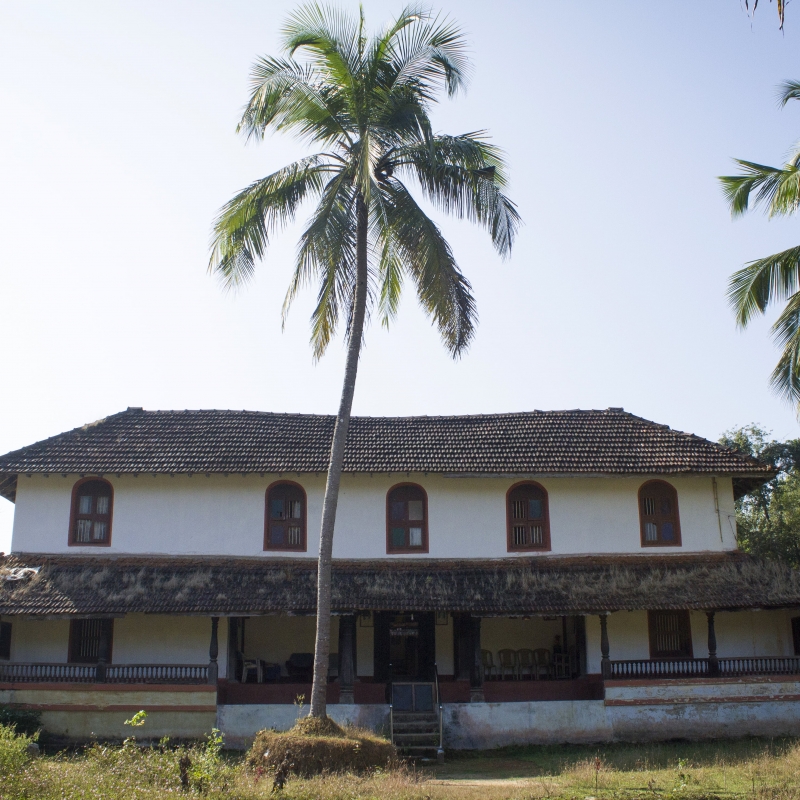The ancient administrative system of Tulunadu played the role of fostering the holistic identity of the Tulu-speaking region of Karnataka expanding from Dakshina Kannada to parts of Kasargod in Kerala. The administrative system, though not politically relevant anymore, plays a key role in its conserved form today in sustaining the cultural identity of coastal Karnataka in various ways, including the conservation of folk arts, funding as well as leading religious practices and preserving the architectural style sheets of the past.
The administrative system of Tulunadu was elaborate, consisting several hierarchical institutions ranging from royalty to weaponry that functioned in coordination. Of the many institutions, such as barke, arantadi, parari, etc., that constituted the complete system, the two major ones were beedu (the royal household) and guttu (the administrative household). These systems were brought to tangible form through infrastructure that were homes for people who were part of these institutions and played the role of an administrative block for the village.
Guttu, or guttumane, are distinct traditional manor households spread across Tulunadu and are reminders of the precision of the administrative system of ancient Tulunadu. These homes are distinguished by their architectural structure and inheritance, and stand for the past lifestyle of Tulunadu. There are around 300 such homes that are preserved today; the rest of them have either undergone renovation or have been destroyed. Back in their time, these homes were the central infrastructure for all kinds of activities of the village they were situated in, such as agriculture, cultural or folk practices, judicial proceedings, and disaster relief. Documents of the earliest guttumane households date back to as early as the fifth century CE, inferring that they came into existence with the agricultural revolution of the same time. The Bunt community, recognised by surnames such as Shetty, Hegde, Rai and so on, own the most of the guttu households, followed by the Jain community which owns all beedu households and a number of guttus as well. This ownership pattern is based on the fact that the Bunt community (the specific term is a modern one, there were other names for the community in the past) were experts in agriculture and managed to bring the rest of the population to coordinate and form villages in the past.
Purpose of existence
Guttu households came into being to serve the primary purpose of administering a village, other responsibilities, such as religious and cultural conservation, were added on later. The system resembled the current-day panchayat system to a large extent. Every village had four guttu households, indicating that each village was divided into four parts based on geography for better administration—12 such villages were marked together to form a magane (Tulu word for collective). There was one guttu household in any of the 12 marked villages known as the magane guttu, inferring that the particular household was a higher authority responsible for all 12 villages; the four guttumanes in every respective village reported to the magane guttu and paid their revenues to it.
Further, hierarchically above the magane guttu was the beedu comprising the royalty, administered by a king or a queen. The constituency of an arasu (king) included multiple maganes and was called a seeme. However, there were four more guttu households that mediated between the magane guttus and the king. These four guttus were marked as the king’s direct subordinates, and they monitored magane guttus, collected reports and revenue from them, and reported to the royalty alone. They could be situated anywhere within the seeme and were recognised as raja guttus or seeme guttus. The system was a rather complex one but it was sustained in the same manner for more than 13 centuries at least. A few of these households survive even today but they hold no administrative importance. However, on a religious and cultural end, most practices of Tulunadu are still concentrated on the participation of guttu households.
Cultural Practices
Guttu households led almost all the cultural and folk practices of the village; most of those practices are followed till date and can be observed in every village of Tulunadu.
Bhoota kola (spirit worship), also known as bhootaradhane, is one of the primary cultural and folk practices based on the Tulu belief that every village is guarded by a bhoota (guardian spirit), who needs to be revered with bhoota kola every year. (Fig. 1) The entire village comes together for this event which either takes place at the garadimane (a religious establishment housing symbolic structures representing the bhoota) or on the courtyard of the hierarchically highest guttumane of the village. The paatri (an individual from the Nalike community who impersonates the bhoota during bhoota kola) appoints the owner of the guttumane as his representative and speaks to him, conveying the concerns of the village, solutions and means for betterment. Whatever the paatri says is considered the word of the guardian spirit and obeyed by the guttu owner as well as rest of the village. This practice enabled the guttu owners to conveniently run the administrative and judicial systems in the village in the past; in the present, the cultural practice is performed in the exact same manner where a guttu owner still leads the proceedings, but he is no more the decision maker of the village.
Nowadays, whatever the paatri says is respected as tradition, and most people do follow what he says out of religious obedience; however, it is not law like it used to be in the past. Bhoota kola, hence, only has cultural and religious value these days.

For bhoota kola, guttumanes also kept symbolic objects, usually stones, representing the bhootas, also known as daivas, meaning deities; these stones were placed within the guttumanes. This custom influenced the architecture of the guttumanes as they required a separate room, known as daivakone, within the house premises; Daivakones, apart from the daivas, included a wooden cot and bronze lamps, preferably hanging on either side. (Fig. 2) The daivakone had to be at a distance from the temple of the household, and the daivas residing there were worshipped every day. Once a daiva is brought inside a guttumane that household cannot be destroyed or left without an inhabitant; this factor has played a key role in the conservation of guttumanes till date.

Another cultural practice led by the guttus is kambala, which is a traditional sport consisting a buffalo race on a marshy field. In the past, all agricultural lands were owned by guttu landlords, and villagers were only allowed to cultivate them over a revenue-based understanding. During the pre-monsoon season, kambala would be held under the leadership of these guttu landlords. Kambala, the sport that is extremely popular even today, is based on the belief that earth must be fertilised for good agricultural yield. A paatri performs a few rituals at the beginning of the event and grants permission for kambala to take place.
The buffalo race is symbolic of the act of fertilisation of land, because Tuluvas associate the act of buffaloes racing over the marshy field to the process of fertilisation. Even today, the guttu landlords lead these events in every village by funding them as well as appearing at the beginning of events.
Almost every village in Tulunadu has its own set of bhoota kola and kambala events organised annually by the guttu landlords. This demographic event pattern is ensured by the system of ajalu (an old Tulu term for constituency), which obligates every village governed by a particular guttu to have its own set of rituals, including bhoota kola and kambala.
Other events held by guttu households includes maalakarya, a ceremony where an entire family—previously, the entire village—comes together to perform a ritual in reverence of the deceased members of a guttu during the harvest season in Tulunadu.
The guttumanes are also the first stop for mankaali, which is a simple dance form performed by a group of people from the Nalike community, who go around the village during Deepavali every year. The idea behind mankaali is that the entourage takes away the evil from every household in the village with their rituals in return for material things, such as food grains and money. The tour of the village begins from the guttumane, where the Nalike dancers perform a small ritual dance and offer prayers to the guardian spirit. With the sustenance of rituals like these, guttumanes in Tulunadu play a key role in conserving the cultural identity of the area.
Architectural Outlook
Other than the cultural and administrative activities, guttumanes are distinct in nature also because of their architecture. They were massive in size as they were the only central infrastructure in villages of nomadic population. Guttumanes were hence the storehouses for all agricultural equipment, religious jewellery, weapons and so on; they provided shelter to many labourers who toiled in the agricultural fields and did household chores, and were refuge for people during a natural disaster or war.
The size of guttumanes was influenced by an architectural element known as the chowka (a large quadrilateral inner courtyard) which one comes across after entering the aanebaagilu (elephant door in Kannada), the main door made of highest quality wood with ornate designs and thickness up to one foot.
An open space, the chowka is located in the middle of the house and is surrounded by corridors on all four sides, which are lined by rooms that have smaller but equally strong wooden doors situated on high thresholds. (Fig. 3) The chowka was primarily used for judicial proceedings and temporary storage of agricultural utilities.
At the centre of the space in most guttumanes is a concrete tulsi katte, a pedestal on which the tulsi plant is worshipped.

Guttumanes have large wooden pillars with ornate designs (Fig. 4) supporting the roofs, which were made of dried grass and/or burnt clay before the British introduced Mangalore tiles to the world. All guttumanes have now adapted to tiled roofing, except Sooralu Aramane in Bramhavar, a town in Udupi, which still has clay roofing from before the British era.
A general pattern in construction of guttumanes was that even though the houses were large, the rooms and corridors were rather small, narrow and cosy. This was because most guttumanes housed large joint families and required more rooms than open spaces. For example, Kolkebailu Mane located at Shirihara near Miyar (a small town in Udupi district) and owned by the Bunts was the largest guttumane (expanding over an area of two acres) which housed over 500 people.
Some experts believe that the thickness of the walls and doors led to such confined spacing of the guttumanes. Though not very spacious inside, the homes are durable; Nada Guttu at Belthangady in Dakshina Kannada district has survived cannonball attacks by Tipu Sultan’s army, which was on a hideout at the nearby Jamalabad Fort. The floors of these homes are red in colour, made with kaave (colour mixed with limestone), a form of paint popular in Tulunadu.
The embellishments in architecture were limited to the main hall, its pillar and some major doors in a guttumane. Rest of the infrastructure was simple, focussing on utility more than grandeur. Most guttumanes have attics that act as storehouses, with wooden flooring and hardly any ventilation; some homes also have a first floor with extra rooms and corridors.
Architecturally, the surviving guttumanes of today have undergone changes to adapt to modern trends. Loss of administrative rights has led to their gradual decline in Tulunadu but they still hold considerable relevance at cultural and religious events. The 300-odd surviving guttumanes are all functional as centres of traditional responsibilities such as bhoota kola. Even after decades of irrelevance in administrative light, these homes are foundations of the collective cultural identity of Tulunadu.

